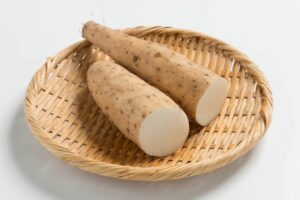Table of Contents
Comprehensive Guide to Wild Yam: Benefits, Uses, and Risks

Comprehensive Guide to Wild Yam: Benefits, Uses, and Risks
What Is Wild Yam?
Wild yam, or Dioscorea villosa, is a perennial vine native to the Americas, prized for its potential medicinal properties. Unlike the sweet yams we consume as food, wild yam is primarily valued for its dried roots and rhizomes, which contain a compound called diosgenin. Diosgenin is a phytoestrogen that can be converted into progesterone in laboratory settings, giving wild yam its reputation as a natural remedy for hormonal imbalances.
Key Health Benefits of Wild Yam
1. Potentially Regulates Blood Sugar
The compound dioscoretine in wild yam has shown promise in regulating blood sugar levels. Research conducted by the Phytotherapy Research Laboratory at the University of Nigeria demonstrated significant glucose reduction in diabetic rabbits treated with dioscoretine. Although human studies are needed, this offers hope for managing blood glucose naturally.
2. May Fight Cancer
Wild yam’s potential anticancer properties stem from its rhizomes, which produce dioscin, a compound shown to have antiproliferative effects on leukemia cells in studies. Moreover, research published in the American Journal of Chinese Medicine supports its phytoestrogenic activity, suggesting a protective role against breast cancer.
3. Could Help Balance Cholesterol
Animal studies have found that diosgenin in wild yam may help improve cholesterol levels by raising HDL (good cholesterol) and lowering LDL (bad cholesterol). While more human trials are needed, these findings indicate wild yam’s potential in promoting cardiovascular health.
4. Relief for Cramps and Muscle Pain
Wild yam’s antispasmodic properties make it a traditional remedy for muscle spasms, menstrual cramps, and other forms of muscle pain. By relaxing muscles, it can provide much-needed relief naturally.
5. May Reduce Photoaging
Studies have highlighted the depigmenting effects of diosgenin, which may address skin issues like melasma and hyperpigmentation. Additionally, diosgenin promotes new skin cell growth, offering anti-aging benefits.
6. Support for Menopause Symptoms
Wild yam is often marketed as a natural solution for menopause symptoms such as hot flashes and mood swings. However, studies like one conducted on wild yam cream have shown mixed results. This underscores the need for further research and consulting a healthcare provider for personalized advice.
7. May Ease Rheumatoid Arthritis Symptoms
Diosgenin’s anti-inflammatory properties could help reduce joint pain and swelling associated with rheumatoid arthritis. While promising, these effects are largely observed in laboratory settings, and human studies are necessary to confirm their applicability.
How to Use Wild Yam
Wild yam is available in various forms, including dried roots, powders, capsules, tablets, and liquid extracts. Here are some practical tips:
- Tea: Boil dried wild yam roots in water, add peppermint oil, and sweeten with stevia for a soothing drink.
- Creams: Useful for topical applications but unlikely to affect hormone levels without laboratory modifications.
- Supplements: Consult a healthcare provider to determine the right dosage based on age and health conditions.
Wild Yam vs. Other Yams
Wild Yam
Primarily used as a supplement, wild yam grows in marshes and forests, featuring heart-shaped leaves and small, fragrant flowers. It contains diosgenin, the key compound responsible for its medicinal properties.
Mexican Yam (Jicama)
Jicama is a member of the pea family, often eaten raw in salads. Unlike wild yam, it is cultivated for its edible root and is unrelated to hormone production.
True Yams
Native to Africa and Asia, true yams are starchy tubers commonly used in cooking. They differ significantly in texture and nutritional composition compared to wild yam.
Risks and Side Effects
Despite its benefits, wild yam may cause allergic reactions and interact with medications like birth control pills or hormone replacement therapy. Pregnant or nursing individuals should avoid its use unless advised by a doctor.
Final Thoughts
Wild yam offers a range of potential health benefits, from blood sugar regulation to skin health. However, its effectiveness in areas like menopause relief remains inconclusive. Always consult a healthcare provider before incorporating wild yam into your routine.